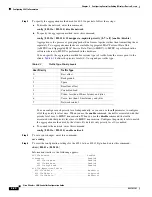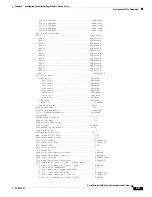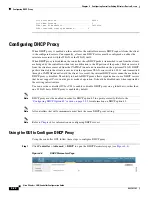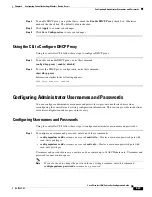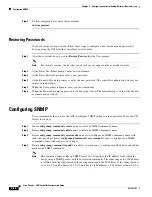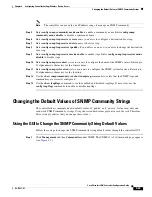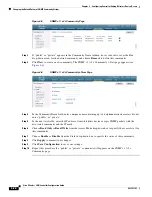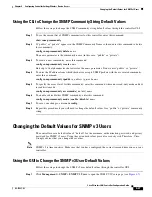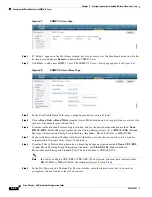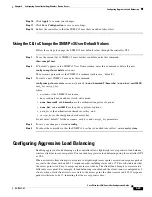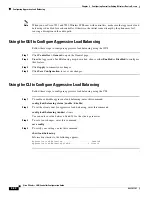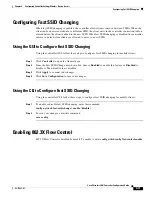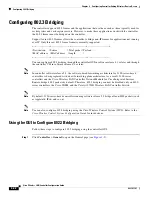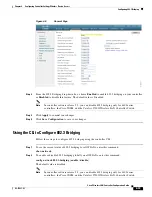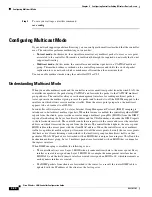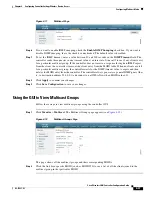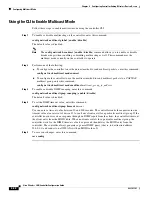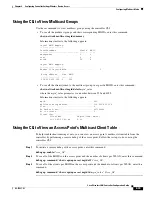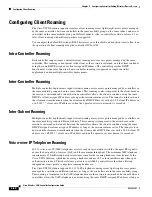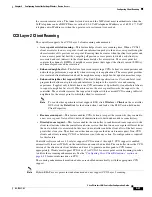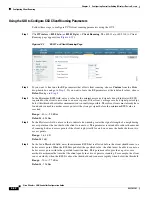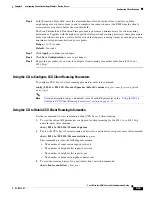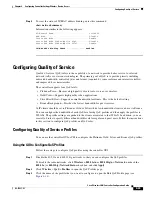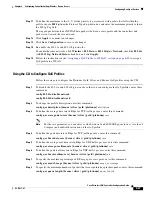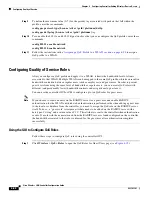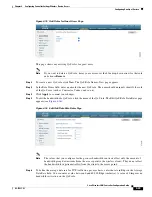
4-34
Cisco Wireless LAN Controller Configuration Guide
OL-17037-01
Chapter 4 Configuring Controller SettingsWireless Device Access
Configuring Multicast Mode
Step 3
To save your settings, enter this command:
save config
Configuring Multicast Mode
If your network supports packet multicasting, you can configure the multicast method that the controller
uses. The controller performs multicasting in two modes:
•
Unicast mode
—In this mode, the controller unicasts every multicast packet to every access point
associated to the controller. This mode is inefficient but might be required on networks that do not
support multicasting.
•
Multicast mode
—In this mode, the controller sends multicast packets to a CAPWAP multicast
group. This method reduces overhead on the controller processor and shifts the work of packet
replication to your network, which is much more efficient than the unicast method.
You can enable multicast mode using the controller GUI or CLI.
Understanding Multicast Mode
When you enable multicast mode and the controller receives a multicast packet from the wired LAN, the
controller encapsulates the packet using CAPWAP and forwards the packet to the CAPWAP multicast
group address. The controller always uses the management interface for sending multicast packets.
Access points in the multicast group receive the packet and forward it to all the BSSIDs mapped to the
interface on which clients receive multicast traffic. From the access point perspective, the multicast
appears to be a broadcast to all SSIDs.
In controller software release 4.2 or later, Internet Group Management Protocol (IGMP) snooping is
introduced to better direct multicast packets. When this feature is enabled, the controller gathers IGMP
reports from the clients, processes them, creates unique multicast group IDs (MGIDs) from the IGMP
reports after checking the Layer 3 multicast address and the VLAN number, and sends the IGMP reports
to the infrastructure switch. The controller sends these reports with the source address as the interface
address on which it received the reports from the clients. The controller then updates the access point
MGID table on the access point with the client MAC address. When the controller receives multicast
traffic for a particular multicast group, it forwards it to all the access points, but only those access points
that have active clients listening or subscribed to that multicast group send multicast traffic on that
particular WLAN. IP packets are forwarded with an MGID that is unique for an ingress VLAN and the
destination multicast group. Layer 2 multicast packets are forwarded with an MGID that is unique for
the ingress interface.
When IGMP snooping is disabled, the following is true:
•
The controller always uses Layer 2 MGID when it sends multicast data to the access point. Every
interface created is assigned one Layer 2 MGID. For example, the management interface has an
MGID of 0, and the first dynamic interface created is assigned an MGID of 8, which increments as
each dynamic interface is created.
•
The IGMP packets from clients are forwarded to the router. As a result, the router IGMP table is
updated with the IP address of the clients as the last reporter.

